2019年11月13日-27日,澳大利亚国立大学Adrian Hayes教授为我校师生讲授人口迁移课程,先后讲授了5次课,主题分别是:
(1)全球中产阶级的发展;
(2)生育率下降的原因与结果;
(3)人口与经济发展:人口红利的重要性;
(4)人口变迁与世界秩序;
(5)人口、气候变化与可持续发展。
社会与心理学院人口研究所侯佳伟教授、张现苓博士主持,社会与心理学院的人口学硕士研究生、金融学院学生、政府管理学院师生、中国人民大学教授共同参与此系列课程授课。
本次活动获得中央财经大学引智项目、青年创新团队项目支持。
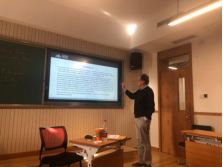
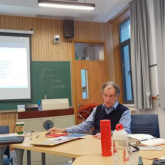
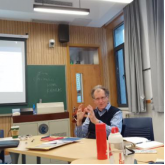
Adrian Hayes是澳洲国立大学人口学院教授。他目前的研究兴趣是人口、发展与气候变化,重点是人口政策、治理、健康和环境之间的联系,包括计划生育的作用。从1988-1990年在国家人口与环境部担任联合国顾问起,他就对印度尼西亚的人口与发展政策有着长期的兴趣。1994-2000年期间,他担任在澳大利亚和印度尼西亚政府的资助下由澳大利亚国立大学与印度尼西亚科学研究院(LIPL)共同在印度尼西亚东部进行的十项与人口有关的政策研究的协调员。2001-2004年期间,他与约翰·霍普金斯大学布隆博格公共卫生学院一起担任美国国际开发署在印度尼西亚资助的项目的政策顾问。在2006-07年度,他担任独立研究小组的组长,该研究小组隶属于世界银行与卫生部的一个大型项目,旨在有效分散卫生部门的工作。除了在印度尼西亚的工作外,他在过去25年中还进行了各种研究,研究了中国、尼泊尔、马来西亚、柬埔寨、所罗门群岛、越南与东帝汶的人口与健康问题和计划,并且与人口基金、科教文组织、澳大利亚开发署和世界银行完成了一系列咨询。他是美国社会学协会气候变化特别工作组的海外成员,并且在2012-2014年间担任第一届IUSSP(国际人口科学联盟)气候变化专门委员会主席。
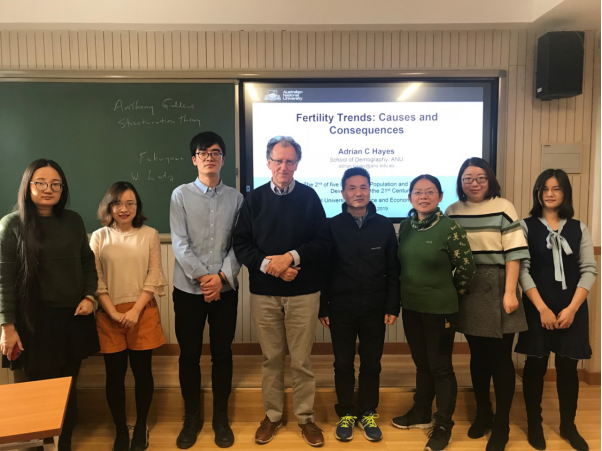
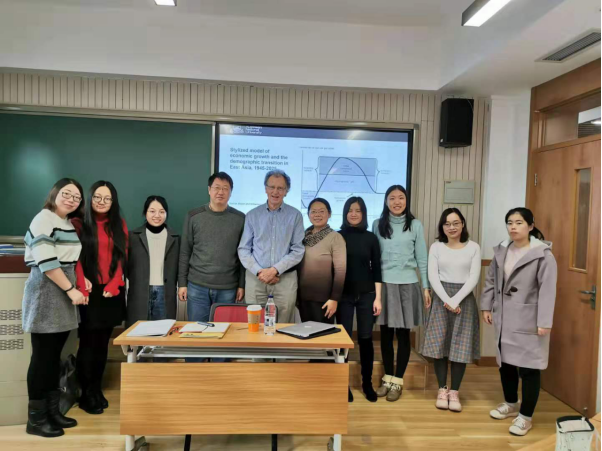
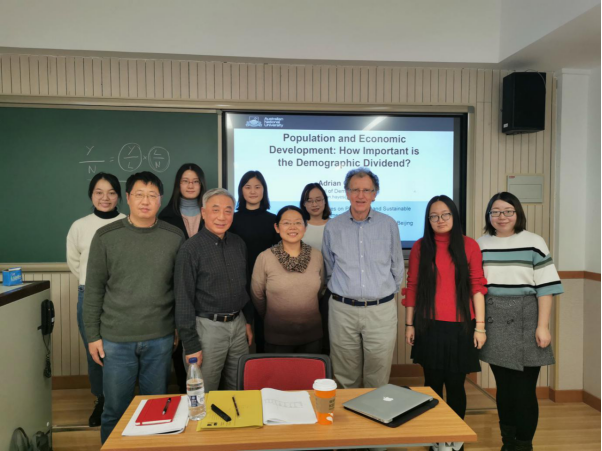
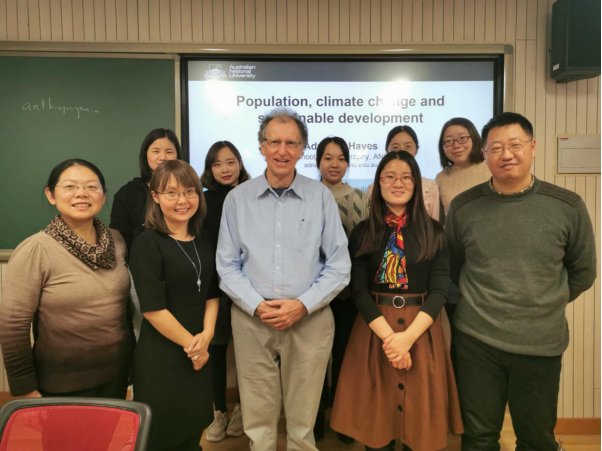
澳大利亚国立大学始建于1946年,是澳大利亚第一所研究型大学,以极高声誉的研究主导型的教学而著称。澳大利亚国立大学在历史上拥有7位诺贝尔奖获得者、49位罗德学者、2位澳大利亚总理。它是澳大利亚“八大名校联盟”成员之一,同时也是全澳唯一享有国立大学资格的最高学府。在最新的QS世界大学排名中,澳大利亚国立大学在全球排名第 29位,连续15年蝉联全澳第一。
课程摘要
Lecture 1: The rise of the global middle class
This is arguably the most important demographic trend at the moment, certainly if we believe that we have an urgent need to make human development sustainable in future.
This lecture looks at the growth of this class, where it is most prominent, the depth of its consumption, its likely role in future development, and the social and environmental consequences of its rise. In closing we consider how alternative pathways for its further growth could be established, how a growing middle class could in fact lead the charge towards sustainable development (SD), and some relevant questions that will be addressed in the following lectures.
Lecture 2: Fertility decline: causes and consequences
We cannot understand the rise of the global middle class without understanding the demographic and economic context in which it occurs. This lecture focuses on its setting within the so-called demographic transition (from high birth and death rates to low). We focus in particular on the pathways to low fertility in Asia since the mid-twentieth century. We argue that an adequate explanation of such pathways requires consideration of macro-, micro- and meso-level phenomena, using both sociological and demographic theory. Pursuing this research program involves expanding ‘interpretive’ research on fertility behaviour, and on human agency more generally.
Lecture 3: Population and economic development: how important is the so-called demographic dividend?
The rise of the global middle class also casts new light on old questions about the relations between demographic change and economic development. This lecture focuses on work during the last 20 years on the so-called demographic dividend, and explains why the dividend, whilst under certain conditions is undeniably real, it is also nonetheless elusive. This analysis can help us identify conditions under which the rise of the global middle class can be sustained.
Lecture 4: Population change and world order
The rise of the global middle class during the last 50 years has depended on increased globalisation and a large measure of international security. Today there is a palpable sense that the world order is changing, and that it could even possibly collapse. Any responsible discussion of population and SD must consider whether population trends during the rest of this century are likely, on balance, to support an international consensus or exacerbate international tensions. Will demography be part of the problem or part of the solution? We argue that demography is in and of itself generally neutral in this regard, but it can become toxic when social issues are misidentified as ‘population problems’. We show how some current developmental trends (e.g. the use of social media) can make this outcome more likely.
Lecture 5: Population, climate change and sustainable development
SD is a social ideal where economic development is pursued in a way that protects the natural environment and promotes social equity, while the overall goal is to enhance the prosperity and wellbeing of the entire population. We have explored in the first four lectures how population change can impact the status of all three corners of the ‘SD triangle’ as well as constraining the overall goal. In the fifth and final lecture we consolidate the argument by focusing on population dynamics and anthropogenic climate change. As homo sapiens we have adapted to grow and multiply as a dominant species. Mitigating and adapting to climate change requires a new union of commitments to growth and life that is not so parochially anthropocentric as most conventional social science. Can we achieve this? An understanding of the complex relations between population change and sustainable development is fundamental if we are to answer this question positively and with confidence.